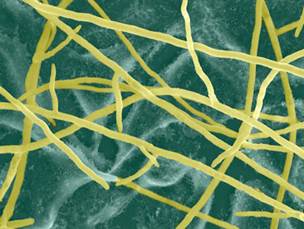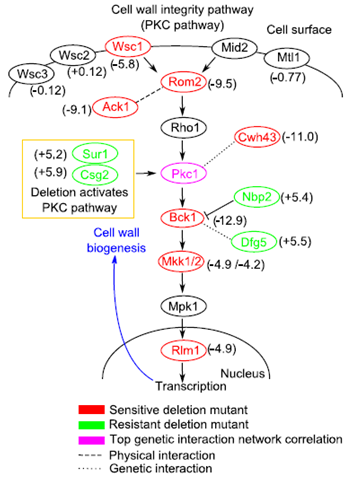研究发现一种植物酸的杀菌力达农药十倍
来源:PNAS
作者:Jeff S. Piotrowski
时间:2015-03-23


一个国际科研小组在新一期美国《国家科学院学报》网络版上报告说,他们发现,某些植物原料含有一种酸性物质,其杀菌能力约为常用农药的10倍。研究人员表示,未来有望据此开发出新型农药,从而减少对环境的影响。
感染病原菌可能导致农作物大幅减产,而长期使用化学农药则会加重环境负担,不利于土壤的可持续生产。
日本东京大学研究生院、理化学研究所的科研人员与美国威斯康星大学等机构合作,分析了稻草、树皮等分解后产生的天然物质,并确认其中的“Poacic酸”具有很强的杀菌能力。这种酸性物质能遏制感染土豆、西红柿的丝状真菌和引起大豆疫霉的卵菌,其杀菌力约为目前常用农药的10倍。
进一步的研究还发现,“Poacic酸”能与真菌细胞壁合成所需的基本物质结合,妨碍真菌细胞壁的形成,从而遏制真菌繁殖。
研究人员说,“Poacic酸”属于植物成分,可自然分解,有望以此为主要原料开发有机农药,以降低农药对环境的影响。这一研究小组将首先在美国开展相关实验,确认“Poacic酸”的杀菌效果和安全性,并争取在3至5年内使以该酸为原料的新农药达到实用水平。(来源:生物360)
Plant-derived antifungal agent poacic acid targets {beta}-1,3-glucan
Abstract A rise in resistance to current antifungals necessitates strategies to identify alternative sources of effective fungicides. We report the discovery of poacic acid, a potent antifungal compound found in lignocellulosic hydrolysates of grasses. Chemical genomics using Saccharomyces cerevisiae showed that loss of cell wall synthesis and maintenance genes conferred increased sensitivity to poacic acid. Morphological analysis revealed that cells treated with poacic acid behaved similarly to cells treated with other cell wall-targeting drugs and mutants with deletions in genes involved in processes related to cell wall biogenesis. Poacic acid causes rapid cell lysis and is synergistic with caspofungin and fluconazole. The cellular target was identified; poacic acid localized to the cell wall and inhibited β-1,3-glucan synthesis in vivo and in vitro, apparently by directly binding β-1,3-glucan. Through its activity on the glucan layer, poacic acid inhibits growth of the fungi Sclerotinia sclerotiorum and Alternaria solani as well as the oomycete Phytophthora sojae. A single application of poacic acid to leaves infected with the broad-range fungal pathogen S. sclerotiorum substantially reduced lesion development. The discovery of poacic acid as a natural antifungal agent targeting β-1,3-glucan highlights the potential side use of products generated in the processing of renewable biomass toward biofuels as a source of valuable bioactive compounds and further clarifies the nature and mechanism of fermentation inhibitors found in lignocellulosic hydrolysates.
原文链接:http://www.pnas.org/content/early/2015/03/05/1410400112.full.pdf+html




